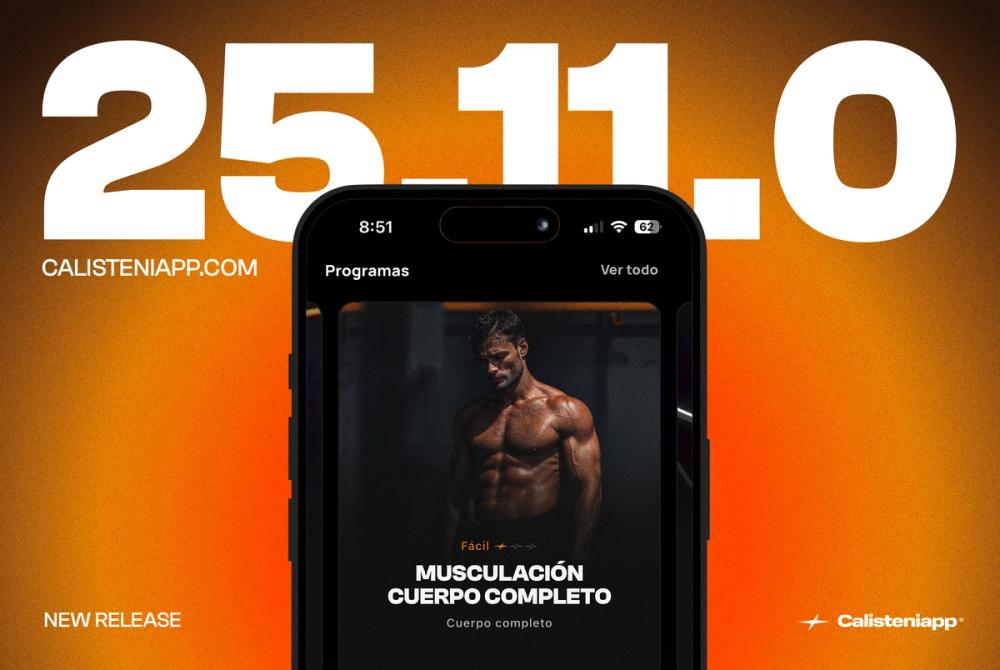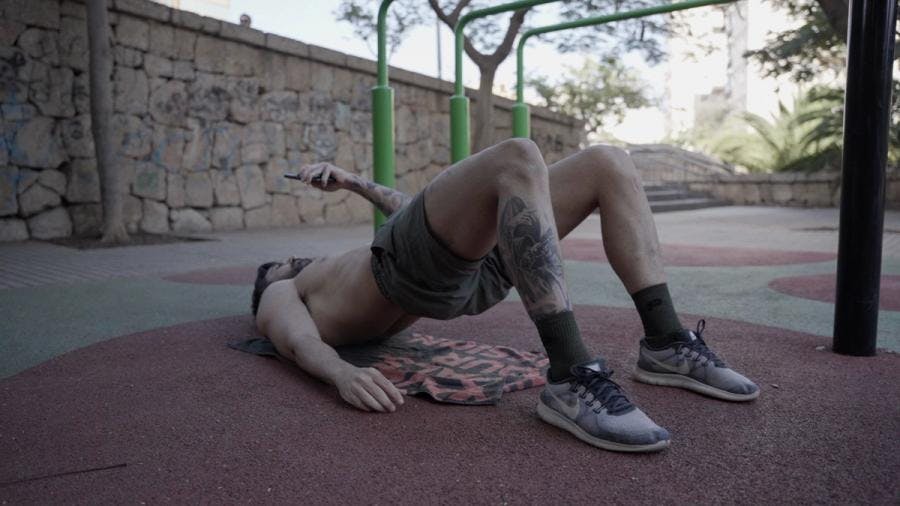
Release 25.11.0 - A new beginning
Calisteniapp is a symbol that represents our obsession with excellence, our essence, and the path we want to define for the next ten years.

When you type “calisthenics” into Google, autocomplete reveals the community’s most frequently asked questions. Some of them make perfect sense; others verge on the hilarious. Below you’ll find the ten most common questions and their answers. I hope they clear things up for you!

Yes—and the reason is simple: muscle responds to stimulus, not to the tool you use. It doesn’t matter whether the load comes from dumbbells, a barbell, or your own bodyweight; what matters is the intensity you apply, how often you expose each muscle to that stimulus, and your total training volume. You can set up a calisthenics routine specifically for hypertrophy by working every muscle group under the right amount of tension. When the reps start to feel easy, add weight or switch to harder progressions; the key is to keep challenging the muscle.
Also yes. Fat loss comes down to creating a calorie deficit—spending more energy than you take in. That extra expenditure can come from calisthenics, cardio, cycling, walking… whatever you enjoy. You have two levers: raise the calories you spend through exercise or lower the calories you consume through nutrition (ideally, use both). Your body doesn’t care whether the deficit comes from muscle-ups or running; it only notices that fewer calories are coming in than going out.
It works… as long as you do. The truth is straightforward: calisthenics is effective for building muscle, losing fat, boosting strength, and learning skills. Even with “so-so” programming, most people make decent progress because it’s a very forgiving discipline. Put in consistent effort and you’ll see results.

There’s no exclusive “calisthenics bonus.” Any physical activity that improves your muscle mass and overall health supports a positive hormonal profile. Calisthenics doesn’t produce a unique effect that sets it apart from powerlifting or machine-based training.
Primarily it improves your relative strength—your ability to move your own bodyweight. That boost carries over to absolute strength as well. For instance, many calisthenics athletes who can easily crank out push-ups, dips on parallel bars, and bar dips (all relative-strength moves) tend to post a respectable bench-press number the first time they try the exercise. These two kinds of strength are interconnected; progress in one helps the other.
It usually delivers lean, aesthetic physiques. Because you need to stay light to perform well, you naturally gravitate toward a lower body-fat percentage, which makes muscle definition pop. The most noticeable changes appear in the chest, shoulders, back, biceps, and triceps. What about legs? That’s where many practitioners fall short: training them with calisthenics requires demanding exercises and plenty of volume, which puts some people off. I encourage you to learn to enjoy lower-body work and break the myth that “calisthenics athletes don’t train legs.”

Yes. It’s defined as a sport built around body-weight training, typically performed on bar parks with hallmark moves such as pull-ups, dips, push-ups, muscle-ups, front lever, planche, human flag, and more. From that foundation, disciplines like freestyle, street lifting (weighted calisthenics), endurance, style, and p-bar flow have emerged.
That depends on your preferences. Decide whether you’re more motivated by training outdoors or indoors, learning gymnastic skills or moving heavy loads. There’s no universal winner and no “worse” option—pick what you enjoy and what aligns with your goal.
Fun fact: in Australia, “calisthenics” is a group dance style with set choreographies. It has nothing to do with pull-ups and dips, but Google sometimes mixes the two worlds, causing confusion in search results.
Total myth. It neither halts growth nor stretches you like chewing gum. Strength training—calisthenics included—promotes strong bones, healthy muscle, and normal development. All you get is health and functionality.
I hope this helped. Remember, if you want specialized training programs, feel free to check out the ones we have available on Calisteniapp.
By Yerai Alonso

Yerai Alonso
Cofundador de Calisteniapp, referente en calistenia y el street workout en Español. Con más de una década de experiencia, es creador de uno de los canales de YouTube más influyentes del sector. Autor del libro La calle es tu gimnasio, campeón de Canarias y jurado en competiciones nacionales e internacionales.
Join our newsletter
Learn everything you need to know about calisthenics

Calisteniapp is a symbol that represents our obsession with excellence, our essence, and the path we want to define for the next ten years.

Descubre los mejores ejercicios de antebrazo para calistenia. Mejora fuerza, agarre y control corporal con entrenamientos efectivos sin pesas.

Discover the 20 most effective ab exercises to train and strengthen your core through calisthenics.
